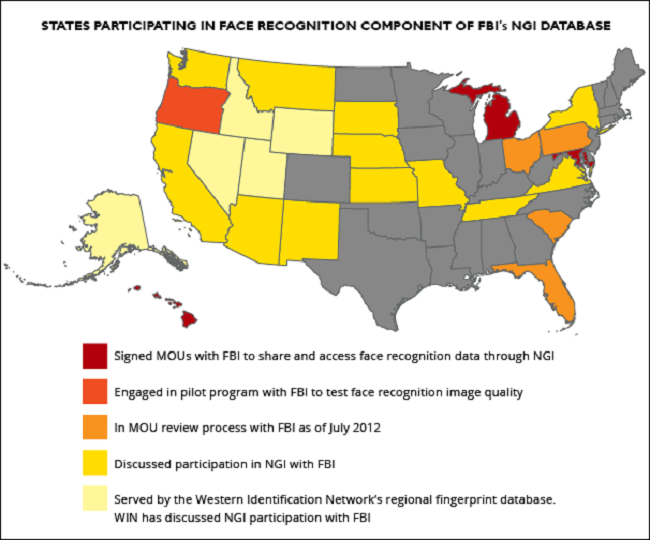The US government is increasing its technological capabilities after documents show the Federal Bureau of Investigation (FBI) hopes to have 52m Americans’ faces in a new facial recognition database.
According to the documents obtained by the Electronic Frontier Foundation, the FBI hopes to have this new advanced software known as Next Generation Identification (NGI) in place for state authorities by 2015.
The most detailed database of individuals and their criminal history is the FBI’s fingerprint database, which has more than 100m individuals on file. They will now be included as part of the NGI database.
The last time the data was counted in 2012, the NGI already contained 13.6m images representing between 7m and 8m individuals, and by the middle of 2013, the size of the database increased to 16m images.
One of the biggest concerns the EFF raises is that the documents appear to show the database will not just contain the faces of criminals, but also of law-abiding citizens, about 4.3m by 2015.
On top of this, a further 1m faces will come from sources they define as “Special Population Cognisant” and “New Repositories”.
In discussing the implications of such a wide-reaching database, the EFF said the potential harm to those who have committed no crimes is far-reaching.
“We know from researchers that the risk of false positives increases as the size of the dataset increases – and, at 52m images, the FBI’s face recognition is a very large dataset. This means that many people will be presented as suspects for crimes they didn’t commit. This is not how our system of justice was designed and should not be a system that Americans tacitly consent to move towards.”

A breakdown of each state in the US and its adoption of the NGI software
Facial-recognition software image via Shutterstock